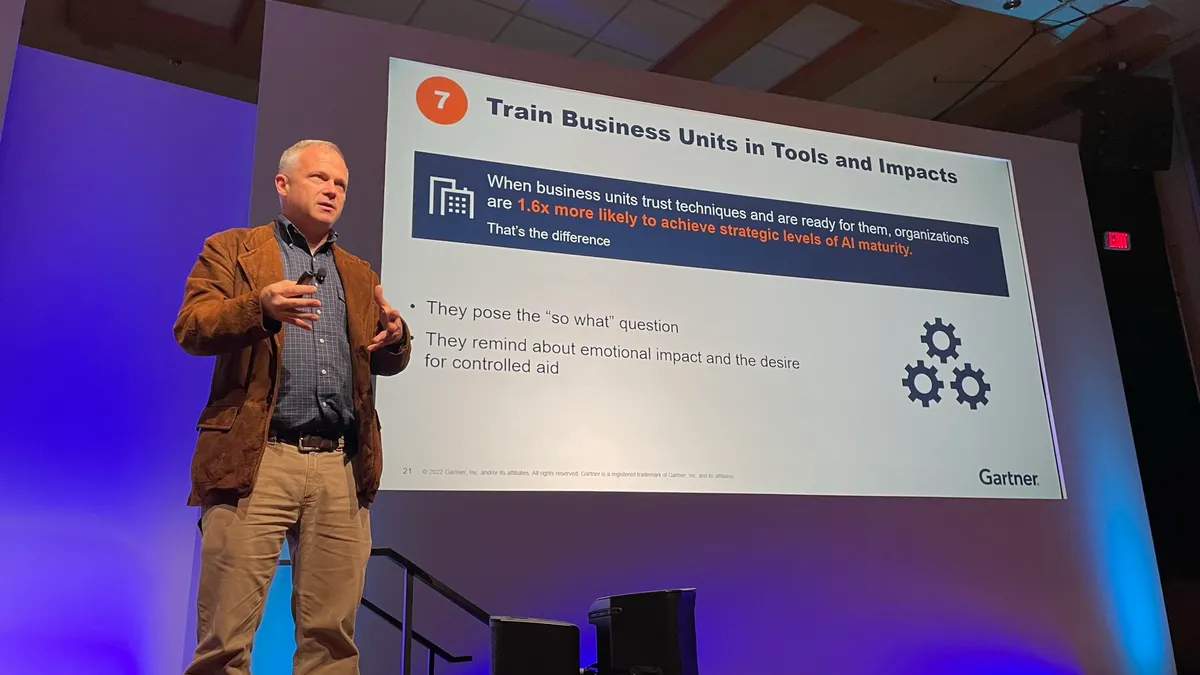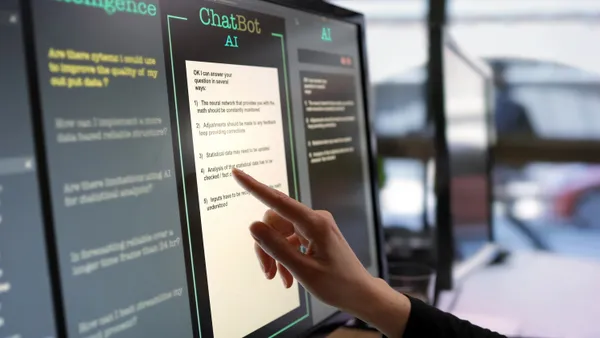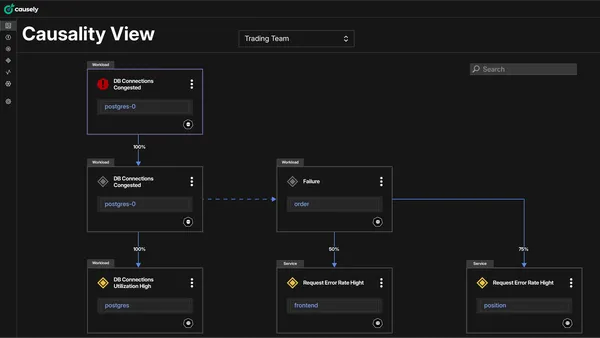How IT leaders make use of the array of AI tools at their disposal will determine success in customer experience, staff retention and even revenue.
As the technology advances, AI will increasingly become "an artificer of different key elements of your work and the work of the people whom you support," said Whit Andrews, distinguished VP analyst at Gartner, speaking Oct. 19 at the Gartner IT Symposium/Xpo, in Orlando, Florida.
And leaders are investing in this long-term trend. The forecasted spending on AI software is set to double by 2025, reaching $64 billion and growing faster than the general software category, according to Forrester projections.
With AI's full potential still under development, here are three specific actions to start taking — today:
Build a right-sized portfolio of projects
Businesses have long targeted repeatable, time-consuming tasks with AI projects, a strategy to address time and labor constraints. But modern businesses should have a right-sized scope when it comes to AI experimentation — not too much, not too little.
"It breaks my heart when I hear from an organization that they're doing this one big thing," said Andrews. Instead of a single big AI project, technology leaders should ensure their organizations can develop a diversified portfolio of ongoing projects.
On the flip side, too many initiatives can also lead to wasted efforts. Organizations doing 20% more AI projects than their counterparts were more likely to report failure than organizations doing fewer projects.
Focus AI governance toward scale
AI has continually spread throughout organizations, more and more frequently as a component of other technology rather than the core. This expansion can be difficult for leaders to effectively manage its use.
"Governance is probably the most important investment we can make today," said Andrews.
Though 1 in 3 CIOs are currently using AI, just 1 in 10 are doing so strategically, in multiple business units for purposes. As executives shape governance, they should avoid constraining their organization's use of the technology — instead using AI to scale.
It's up to leaders to ask how and where AI can spark creativity, whether that means designing networks or setting up new pricing strategies, according to Andrews.
"What is it that you can turn to artificial intelligence to start to meaningfully help you jumpstart or kickstart?" he said.
Solve for a new talent landscape
Talent is becoming less of a need toward AI implementation, most leaders said in a recent Gartner survey. The trend was a reversal of the long-held narrative around AI talent scarcity.
This shift, Andrews said, signals a change in how AI is generated, opening up access to a greater number of people within the enterprise.
The new framework for connecting talent to AI means potentially improving employee satisfaction.
"Help people invest their interest in AI work to discover what they're passionate about, in order to discover what your organization is passionate about," Andrews said.













